The triangle choke is one of the most compelling submissions in Brazilian jiu-jitsu. It is a powerful choke submission to conquer your even more prominent and severe fighters.
As a wise BJJ and MMA competitor, you must learn and master the triangle choke from many positions to build a challenging attacking game.
This guide will help you understand, finish, or rediscover the fundamentals of the triangle choke and its variations, setup, transitions, drills, and other amazing things. Stay tuned!
What Does the Triangle Choke Mean in Jiu-Jitsu?
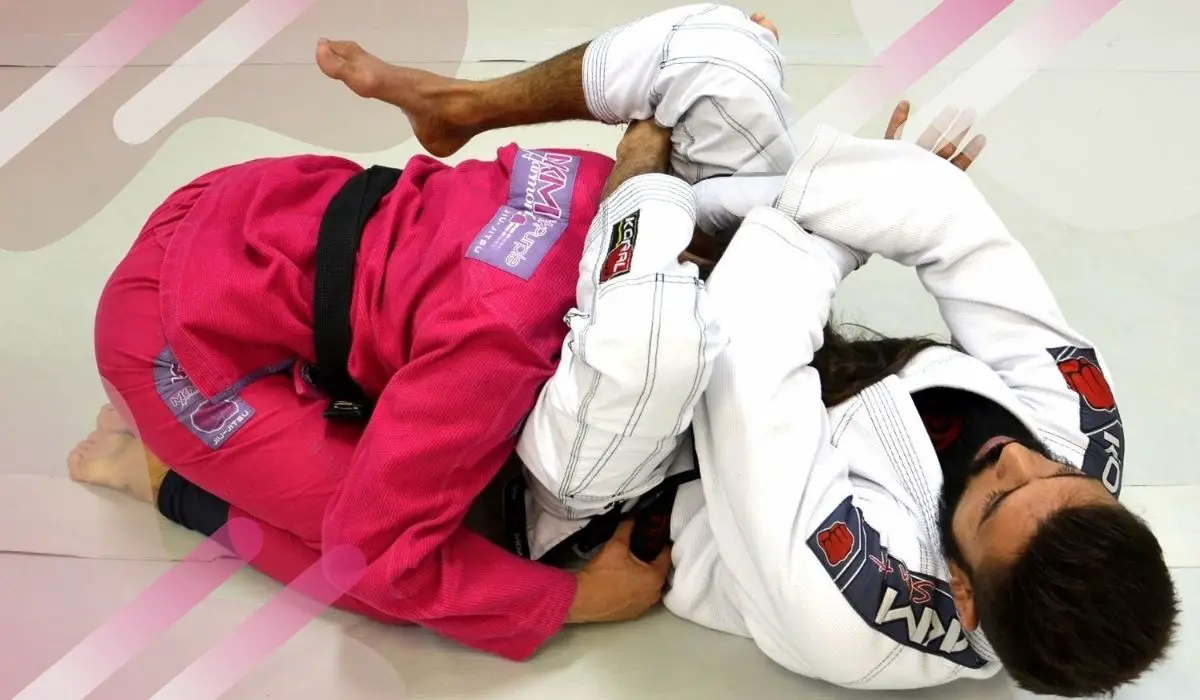
The triangle choke (triangulo in Portuguese) is one of the basic techniques in Brazilian jiu-jitsu extracted from Judo martial art. It is a submission hold where a grappler traps the opponent’s neck and arm between his legs.
In the following video, Coach John Danaher teaches you the jiu-jitsu triangle choke mechanics and fundamentals.
Understanding these basics will help appropriately set up the triangle choke submission from the different BJJ positions.
How Does the Triangle Choke Work?
The triangle choke creates high pressure across your opponent’s neck and disturbs the blood flow. Because of this, the opponent has few options other than tap out or sleep.
Related: Learn about the Jiu Jitsu Triangle Symbol’s origins and significance. See how it’s used in martial arts, and how it affects Jiu-Jitsu practitioners. Click here to learn more!
How to Do a Triangle Choke in BJJ?
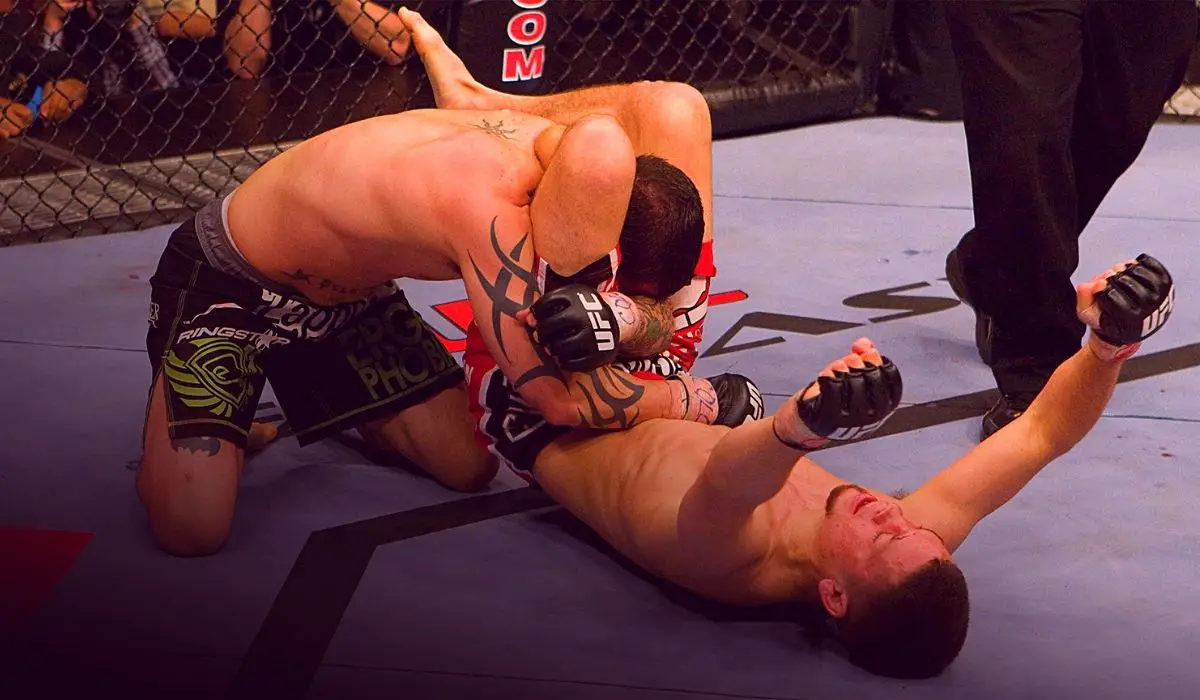
The triangle choke is one of the best chokes in Brazillian jiu-jitsu, MMA, self-defense, etc. It is highly effective in BJJ competitions.
A practitioner can set up this chokehold technique differently depending on the opponent’s position (standing, kneeling).
Therefore, the mounted triangle setup differs from the triangle from the back mount or spider guard, etc.
So, the triangle entry defines the steps to follow to complete the submission. Suppose you’re at the closed guard position; here is how to set up the triangle choke.
Step 1: Control Your Opponent’s Wrists
Controlling the opponent’s wrists may be the first step in most versions of triangles.
Use the sleeve grip for easy wrist control, or if you’re in a no-gi grappling or MMA match, you can use the monkey grip or C-Clamp grip. Wrist control is very effective for several outcomes:
- It will help you access some submissions (triangle, wrist lock, armbar, omoplata, kimura, etc.).
- Control your opponent and read his BJJ movement …
John Danaher gives you some excellent concepts on properly controlling the opponent’s wrist to a successful triangle submission through the video below.
Step 2: Put One Opponent’s Arm in and the Other Arm Out
One of the sequences toward the triangle choke achievement is putting one opponent’s arm in (between the attacker’s legs) and the other arm out.
There are many scenarios to reach this position (arm in, arm out), like one arm being pressed into the opponent’s torso, and the other being pulled forward.
N.B. Make sure to reach that position with a smooth arm-leg movement combination. However, you’ll give your opponent the chance to read your game, and your attack will surely fail. This is because it’s hard to finish the technique when your next move is widely apparent.
Step 3: Go for a High Guard with Locked Legs
Once you place one arm in/one arm out, the attacking student needs to lock his legs near the opponent’s shoulders.
But make sure that the leg movement is done explosively and smoothly in combination with the hands’ movement (one arm in/one arm out).
This new leg position controls and limits the opponent’s choices and closes the distance within your opponent.
From there, you don’t need to hurry up; take your time before moving to the next step.
Then you – the attacker guy – should lock your legs and place one leg over the shoulder of the arm and the opposite leg under the opponent’s opposite shoulder.
Bonus tip: Certain triangle submissions, like the mounted triangle choke, won’t involve this explosive, upward movement.
Step 4: Control the Opponent’s Posture and Head
The triangle attacker is now in advanced status toward finishing the submission.
And things will be much easier if he uses his legs and free hands to control the opponent’s head and posture.
As a result, the jiu-jitsu opponent will have poor choices to escape from this dominant submission position.
Bonus Tip: Make sure to maintain this control effectively as the closing distance will give the attacker a high percentage to finish the submission, which is valid for the different triangle variations and transitions.
Step 5: Readjust Your Posture If Necessary
As a BJJ fighter, you need to readjust your position in most submissions to get the perfect leverage to finish the technique.
It’s the same when performing the triangle choke; you should fix your submission’s angle by adjusting the hips and legs to make the triangle so tight without losing time and energy.
Step 6: Finish the Triangle
Finishing the triangle is the next step after the attacker has achieved the abovementioned position. So, how do you spend the triangle choke?
John Danaher teaches the concepts needed to complete the triangle submission through the video tutorial below.
When the attacker’s legs are locked around the opponent’s neck, the opponent’s trapped arm is positioned across the attacker’s body, and the attacker’s hips are well-positioned.
Then, the attacker needs to do a small hip bridge, squeeze his legs together, and pull down on the opponent’s head.
As a result, the opponent will give up the fight due to the immense pressure produced on his neck.
Here is another instructional video on how to triangle choke. Coach Tom teaches four hacks to complete the triangle submission through the video tutorial below.
Another instructional video teaches you how to do the No-Gi triangle choke.
Awesome!! Never say, “I can’t finish a triangle choke.”
Triangle Choke Variations in Jiu-Jitsu

The triangle choke is one of the most compelling submissions in the art of jiu-jitsu.
It can be performed with several variations from several positions, including the closed guard, half guard, full mount, back mount, side control, rubber guard, spider guard, etc.
However, the triangle choke’s mechanics remain the same. If you have difficulty with it from a closed guard, you will have difficulty with it from other positions.
Triangle Choke from Closed Guard
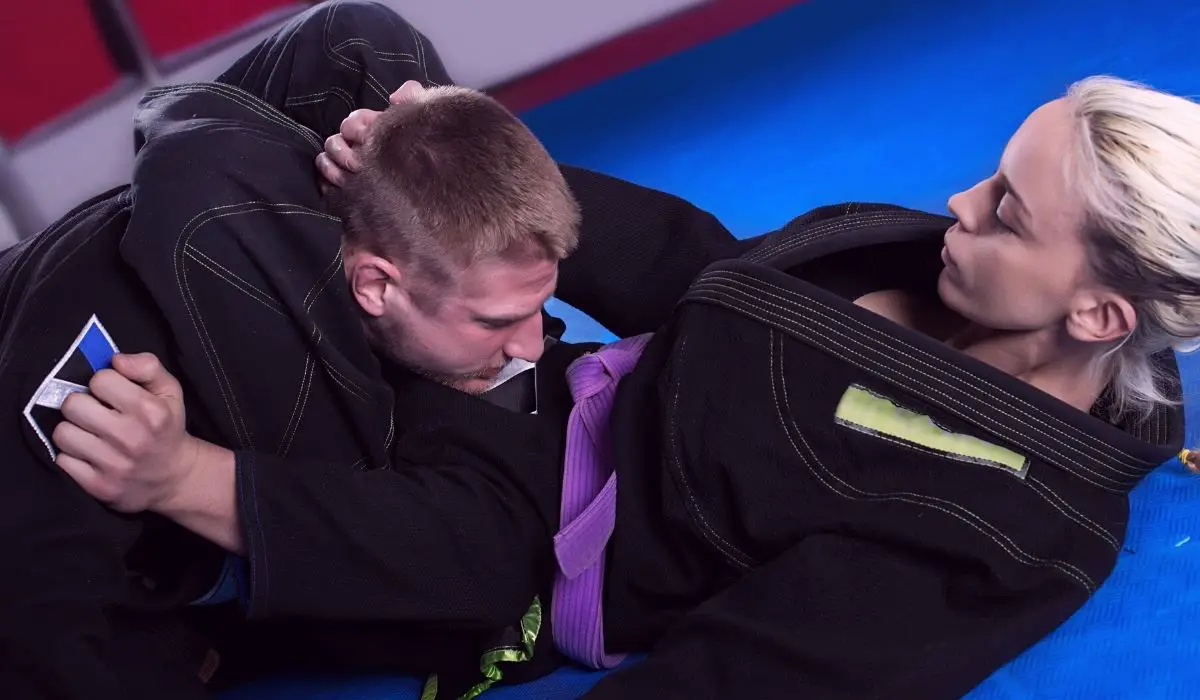
The triangle choke from the guard is one of BJJ’s most straightforward and famous submissions.
Proficient, versatile, and successful submissions in Gi/Nogi and MMA since the early days of Brazilian jiu-jitsu.
Here are more details about the triangle from the guard in the video below.
Related: Explore the top Jiu-Jitsu fighters who excel in the UFC. You’ll discover some of the best athletes who have mastered the BJJ martial arts and have made a name for themselves in the UFC. Click here to read more!
Triangle Choke from Mount
The mount is one of the primary and top dominant positions in Brazilian jiu-jitsu.
Thus, the mounted triangle choke is undoubtedly a great submission that you should go for it. So, how to triangle choke from the BJJ mount?
The triangle choke from the mount is another effective BJJ move to submit your opponent.
So, when you’re at the mount position, you should start by placing the opponent’s arm between your legs, and your other leg goes under the opponent’s head.
Manage your weight correctly to create maximum pressure on your opponent.
And Boom! you’re ready to finish the BJJ triangle from this position, or you can roll to the side control and finish it.
Apart from the full-guard triangle, the mounted jiu-jitsu triangle choke is the most successful variation of triangles.
Recommended: This comprehensive article will teach you everything you need to know about the mount position in BJJ. It explains the mount’s basics and offers some effective attacks to help defeat your many opponents.
Triangle Choke from Side Control
Side control is one of the primary and top fertile positions in Brazilian jiu-jitsu that gives you a plethora of submissions, including the triangle choke.
The side control triangle submission is a great choice if you’re in that position. So, how do you set up the BJJ triangle from side control?
- Triangle choke from the top side control position
- Triangle choke from the bottom side control position
Related: This comprehensive article will teach you everything you need to know about the BJJ side control position. It explains the position basics and offers effective submissions to improve your game.
Arm Triangle Choke
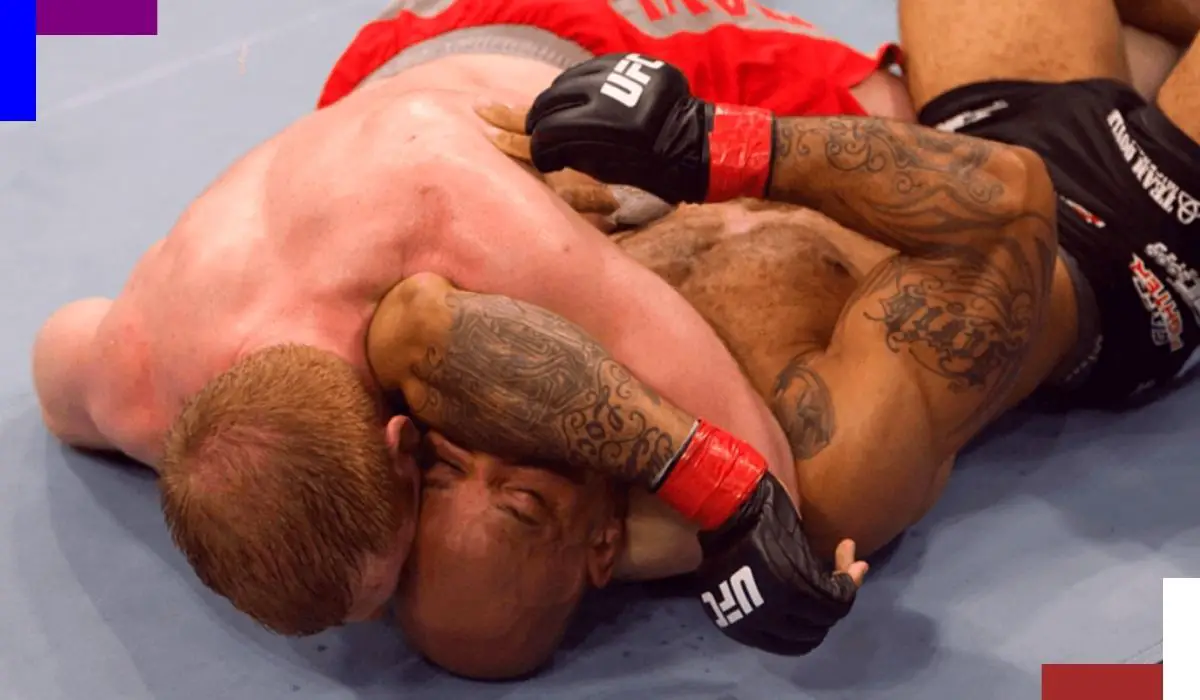
The arm triangle choke is usually achieved successfully in mixed martial arts (MMA) and Brazilian jiu-jitsu.
The fighter needs to establish solid top control on the opponent’s upper body, which presses the load down on the warrior’s upper body.
Like the other triangle variations, the arm-triangle may be a blood choke submission that leaves the opponent strangled between their shoulder and your arm. So, how to do the triangle arm choke?
The triangle arm choke is reachable from several jiu-jitsu positions, such as the side control, the mount, and half guard, to mention names, but the prominent position is the side control.
You must use your forearm alongside your opponent’s outstretched arm and shoulder.
Then, you furthermore may want to squeeze a forearm into your opponent’s neck to raise and accomplish the triangle submission.
As a result, you’ll stop the air and blood flow to your opponent leading to tap out.
Inverted Jiu-Jitsu Triangle
The inverted triangle choke is a brilliant submission because, in most cases, your opponent cannot predict it.
The prolific Estima brothers used this variation of BJJ triangle chokes to submit top-level grapplers. So, how do you do an inverted triangle?
The inverted triangle’s mechanic jiu-jitsu movements are relatively simple to learn and apply.
Let’s assume you try to attack your opponent with an inverted triangle while in the side control position.
So, here are the necessary steps to finish the inverted triangle from side control.
- First, ensure that the entry to the triangle exists, where you must detect that one opponent’s arm is in (between your legs) and the other is out (make it happen if not).
- Secondly, you would like to throw your far side leg over the opponent’s head.
- Third, close the triangle by closing your legs and readjust your position if necessary to make the BJJ triangle very tight.
- Squeeze your legs, and scoot your butt towards the opponent’s hips.
Reverse Triangle Choke
The reverse jiu-jitsu triangle choke is one of the essential triangle submission variations.
Let’s assume you’re at the top BJJ turtle position, where your opponent gives you no chance to reach his back control.
Sure, you would like to switch things up; for example, go for a reverse triangle. So, how to do a reverse triangle in Brazilian jiu-jitsu?
To reach the reverse triangle choke from the top turtle position, you should insert your nearside leg under the opponent’s head and all the way around.
The purpose is to secure your ankle on the highest with your opposite pistol.
Therefore, the leg you’ve got under the opponent goes to make choking pressure with the shin.
As far as the modified triangle chokes go, this one is tight and doesn’t require any particular limb length.
Rubber Guard Triangle Choke
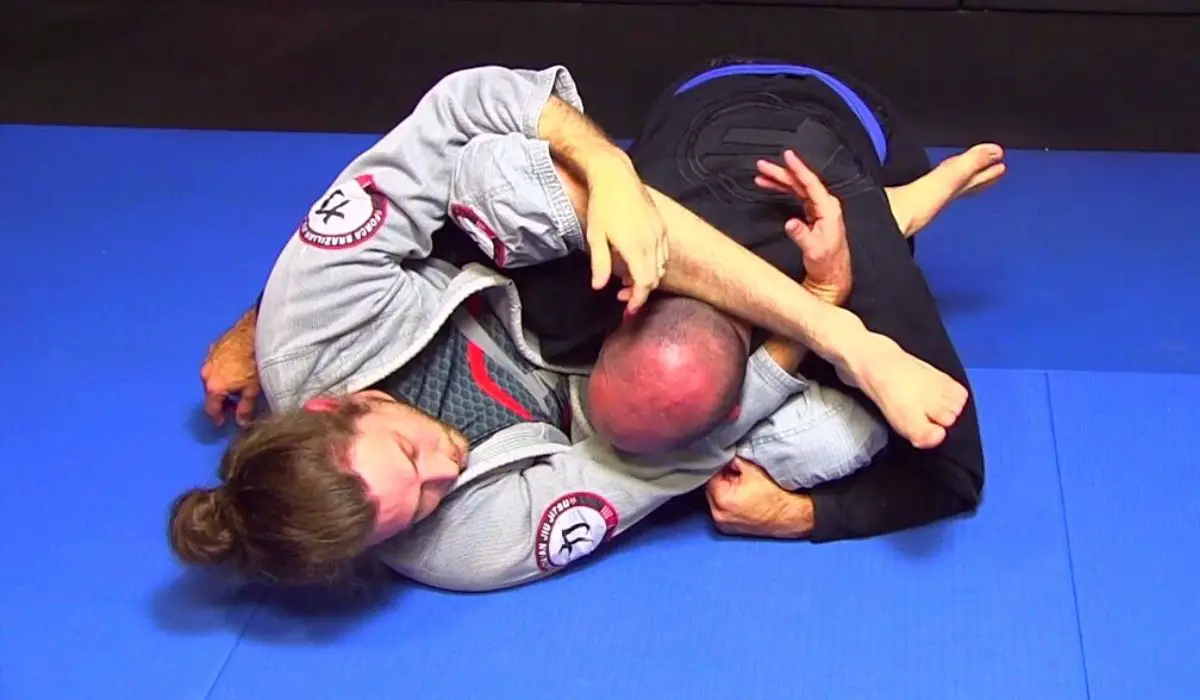
The triangle choke from the rubber guard position is one of the most dangerous submissions.
Besides, it is one of the most effective triangle choke variations that any practitioner should be familiar with.
Moreover, The rubber guard is a high-percentage attack in gi and no-gi jiu-jitsu and mixed martial arts (MMA). It is considered one of the most sophisticated guards in grappling and MMA.
The following video instructs you to execute the triangle choke from the rubber guard correctly.
Rear Triangle Choke
The rear triangle choke is a terrific way of handling an ultra-defensive opponent once you have back control.
But, honestly, out of all triangles, I know this one; it is far and away from my favorite.
Sometimes you only can’t finish a BJJ choke from the back due to the excellent defense of a top-class hand-fighting expert, so you’re getting to hit a rear triangle.
The following video teaches how to do a rear triangle choke in Jiu-Jitsu.
To get a rear triangle choke in Brazilian Jiu-Jitsu or MMA, you need to start from a basic seatbelt configuration, and you should reach the choking side.
Then, you should extend your arms from this BJJ position to create enough space to angle out towards the “under” side.
Then, make a smooth move toward the rear triangle. Just get your bottom leg across the opponent’s neck and make it through to lock up with the opposite leg.
This brutal triangle submission leaves you with total opponent control leading him to submit.
Triangle from Spider Guard

The spider guard is another amazing position to catch a triangle choke submission. This spider is one of the most advanced and effective guards in Brazilian jiu-jitsu.
You can perform the spider guard triangle choke by following the following steps:
- Begin by achieving the spider guard stance and secure it using solid sleeve grips and proper feet position.
- Control both opponent’s sleeves and use your feet on the opponent’s biceps to break his posture (one foot pulled up and the other pulled down).
- Take advantage of the proper time and lift your upper leg to control the opponent’s head while also moving your hips higher. These movements will trap the opponent’s neck and arm.
- Finish the triangle by squeezing your legs and driving your hips up and the opponent’s hips down.
The following video gives you more detail to execute the triangle chokehold from the spider guard.
No Arm Triangle
What if your BJJ opponent arrives to get out their arm during the triangle chokes setup? How remedy to maintain the dominant jiu-jitsu position and get the submission done?
The regular triangle could not be finished when the opponent gets their arm out due to the big space inside the triangle move structure.
The attacker needs to move actively to maintain his dominance; then, a no-arm-triangle choke would be a good BJJ submission choice. So, how to do the no-arm-triangle choke in BJJ?
During the BJJ triangle choke setup without a trapped arm, you’ll discover that you need just some simple jiu-jitsu moves to fix the situation.
- First, you should maintain the attack position structure and use your arm to keep the wedge leg.
- Then, thread your other arm under the opponent’s neck and grab your first arm.
- And finally, you’ll pack up the triangle technique and squeeze. And here is the tap; no one can shake it.
Triangle Choke Transitions
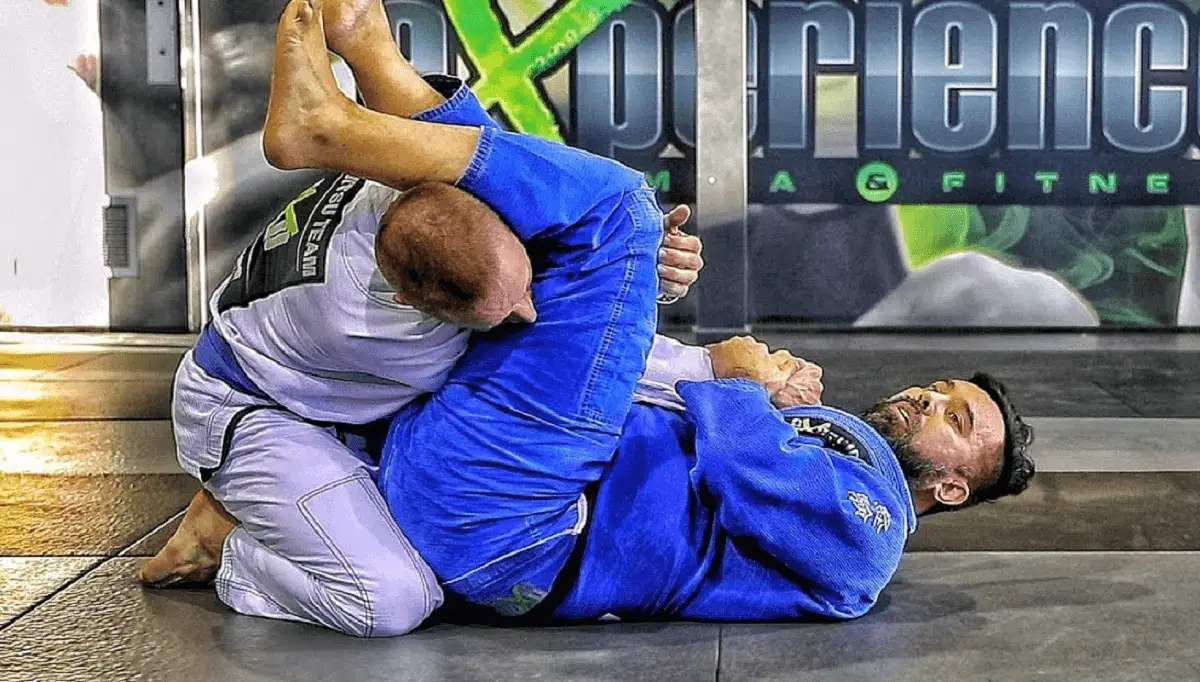
Mastering multiple triangle choke transitions will be fantastic for diversifying your jiu-jitsu game. Thus, you can get a glance transit to the armbar, kimura, or omoplata.
However, always relying on the triangle choke submission to win a fight could bring you trouble fighting different opponents.
Did you know that you could easily switch from the triangle to the armbar or omoplata? Here are some triangle transitions.
Triangle to Armbar Transition

Triangles and armbars are among the hottest submissions in jiu-jitsu martial art and grappling.
These two techniques are very effective and reachable from almost every BJJ position, including the guard, mount, side control, back, and more.
Here is how to switch from a triangle choke to the armbar from several BJJ positions.
Triangle Choke to Armbar from Guard
The closed guard is a superb position in Brazilian jiu-jitsu that allows the practitioner to switch from the triangle choke to the armbar. Here’s how?
Triangle to Armbar from Mount
The jiu-jitsu mount is another essential position in Brazilian jiu-jitsu. It gives you multiple choices to go for the mounted triangle armbar combo.
Triangle to Armbar from Back Mount
The back mount is another essential position in BJJ martial art. It can offer several terrific submission transitions, including the rear triangle choke to armbar combo.
Triangle Omoplata Transition
The video below lets you learn to get an awesome armbar triangle omoplata combo from closed guard.
BJJ Triangle Choke Escapes
During a fight, you must give all necessary to win, and it’s not always easy. But sometimes, competitors make mistakes finding themselves in a deteriorating position like the triangle choke.
This happens, but you can’t just give up at that point. So, you need to try an escape, which is possible if you make good moves at the right time.
However, you should know that most escape techniques consume much of the fighter’s energy.
And it comes to possibly correcting a failure in the Brazilian jiu-jitsu submission defense approach. So, how to get out of a triangle choke?
The triangle choke is one of the top submissions that forces several grapplers to tape out due to the high neck pressure. But is there any chance of getting out of it?
The good news is that a particular sequence moves to escape the triangle chokehold. However, these escape moves will be effective if the triangle isn’t already locked.
Here are some tips to escape the triangle choke from the guard:
- You first need to adjust your posture, allowing you time to breathe correctly and prevent choking.
- Your Knee must be placed into the side of the opponent’s hip.
- Continue and spin to side control.
Brazilian Jiu-Jitsu Triangle Drills

Like other techniques, drilling the triangle choke variations will help you perfect this BJJ submission.
A Jiu-Jitsu drill will give you more coordination and quality while executing the movement sequence.
Here is an excellent video on how to drill the BJJ UFC triangle, armbar, omoplata variations
Here is another jiu-jitsu instructional video showing you some excellent triangle choke drills
Triangle Choke in Mixed Martial Arts
The triangle chokehold is commonly used in mixed martial arts competitions, including the UFC, Bellator, ONE Championship, etc.
The following are some of the best triangle choke submissions in the Ultimate Fighting Championship.
Conclusion
The triangle choke is a powerful submission hold in Brazilian jiu-jitsu and mixed martial arts (MMA). It is an effective choke technique to end a fight.
This chokehold occurs when a grappler traps his opponent’s neck and one arm with the legs. Otherwise, it cuts off the blood supply to the brain and forces the opponent to surrender.
Furthermore, the triangle choke is a flexible submission hold that can be used from various positions, including the guard, side control, full mount, and back mount.
Frequently Asked Questions

Related: Unleash the power of the armbar and elevate your BJJ game to new heights! This devastating armlock is a must-have technique for any serious practitioner. Click here to learn more!
How Effective Is the Triangle Choke?
The triangle choke is a particularly efficient submission technique in Brazilian jiu-jitsu and MMA. It is noted for its adaptability from various grappling positions, including the guard, full mount, back control, etc.
When used properly, the triangle choke may effectively end a fight by forcing an opponent to surrender fast.
However, the efficacy of the triangle chokehold relies on the execution and the scenario. So, drilling this move more often under an instructor’s supervision can help you master it properly.
What Exactly Does the Triangle Choke Do?
The triangle choke is a kind of submission hold used to compel an opponent to submit or tap out by cutting off the blood supply to the brain.
The technique involves trapping one of the opponent’s arms with the knees and applying pressure to the neck with the free arm.
Squeezing the legs together creates pressure on the neck, compressing the carotid arteries and jugular vein, limiting blood supply to the brain.
Is the Triangle Choke an Air or Blood Choke?
The triangle choke is a blood choke instead of an air choke. A blood choke prevents blood flow to the brain, while an air choke prevents air supply to the lungs.
It is vital to highlight that blood chokes are more hazardous than air chokes. They may produce unconsciousness more rapidly and, if maintained for too long, can cause lasting harm.
As a result, while performing a blood choke, it is critical to be mindful of your opponent’s safety and to release the hold as soon as the opponent taps out or becomes unconscious.


